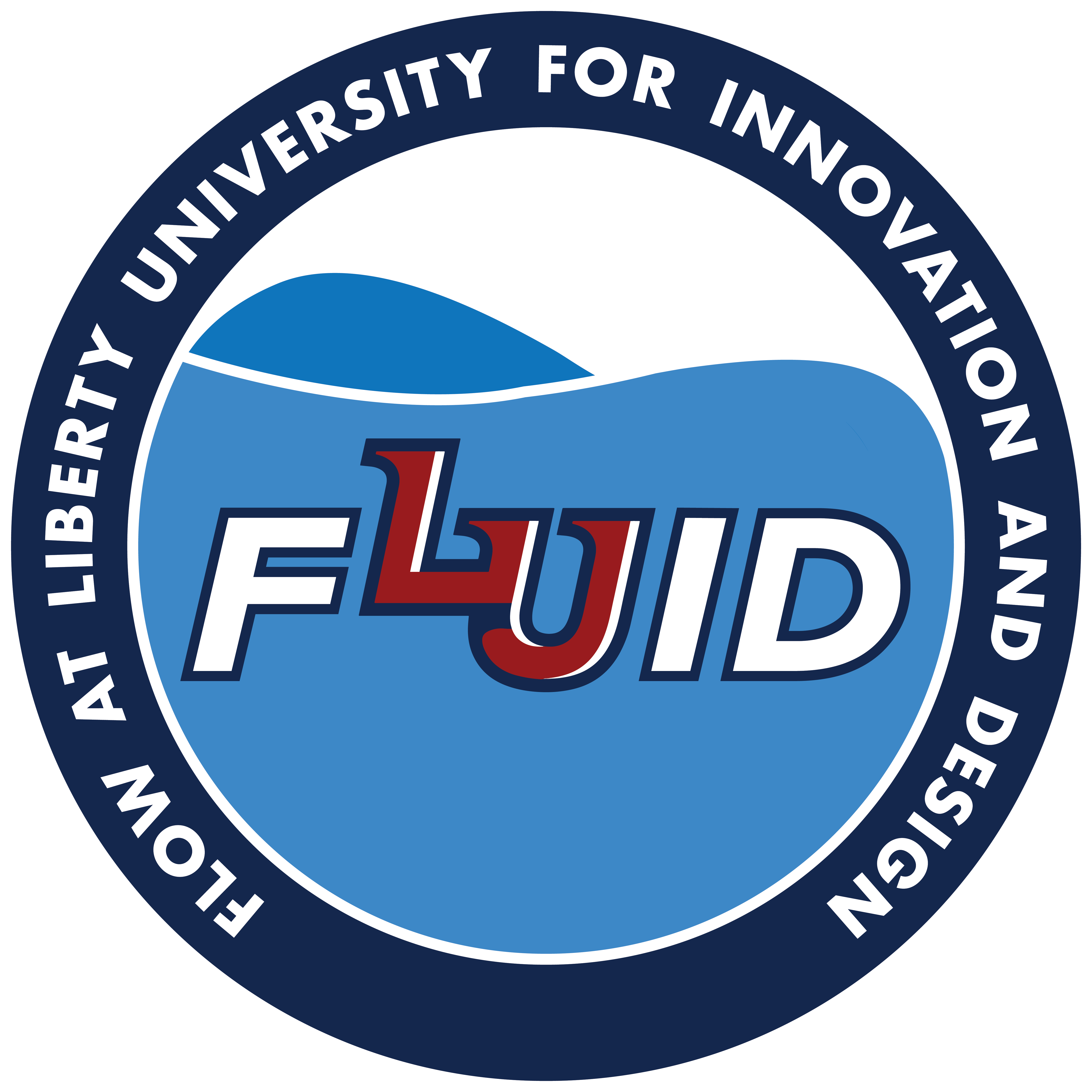Industrial Applications

Simple Feed Inversion Transforms a Slurry Atomizer
Researcher: Wayne Strasser
A common method for maximizing energy conversion is to introduce particulate wastes (industrial, municipal, or sewer) into energy-harvesting equipment, such as steam boilers. Doing so, however, often requires the waste be provided in a viscous slurry form which is difficult to disintegrate for combustion. Steam-assisted atomization can, therefore, be beneficial, but the additional steam reduces boiler efficiency. Minimizing steam introduction thus becomes a primary motivation. Typical twin-fluid atomizers involve the assisting steam flowing on the outside of the assisted slurry; it is shown that this method produces unsatisfactory atomization at preferred steam flows. Inverting the feeds, such that the slurry is outside the steam, produces atomized slurry down to very low steam flows according to CFD simulations. The key is to allow interfacial unsteadiness to encourage a pulsing flow which amplifies the growth of instabilities. Reduced order models facilitate rapid design evaluations.
Developing Accurate Simulation of Chemical Reactors
Researcher: Eric Turman | Faculty Advisor: Wayne Strasser
Industrial autoclave reactors produce low density polyethylene by mixing an initiator and a monomer to produce a polymer. The chemical reactions taking place release heat to the surrounding fluid causing surrounding fluid to heat up. The decomposition or breaking down of ethylene is of interest within these types of reactors due to its ability to heat up the reactor beyond a maximum temperature threshold. Meaning temperature cannot be lowered with control input and the reactor must be shut down and all internal fluid flushed out. Computational fluid dynamics (CFD) is a simulation tool used to study fluid flows. CFD was employed to study the decomposition of ethylene within a low-density polyethylene 4-zone reactor to reduce the accumulation of hot unmixed material. Decomposition reactions are self-perpetuating and will accelerate the reaction rate if the reaction is able to proceed unchecked. An accurate computational model can predict conditions resulting in thermal runaway, which can cause unplanned shutdowns. Improving the reactor design allows for longer run times and a higher degree of catalyst conversion. The CFD model employed reaction kinetics, PID-automated catalyst injection systems, and a rotating stirrer shaft to rigorously model the conceptual reactor. Early models identified zones which were not well-mixed, and wall-mounted baffles were modeled to improve mixing. Later, “hotspots” were defined as contiguous volumes greater than one cubic inch and above 300°C. These hotspots were studied to determine the risk for causing a decomposition and were determined safe if the volume did not exceed the one cubic inch limit. The current model revealed that hotspots were concentrated around the stirrer shaft, and characteristics of those hot spots were elucidated.
Hydrogen Combustion Engines in Aircrafts
Researcher: Isabelle Ambrose | Faculty Advisor: Wayne Strasser
Through research, we seek to provide simulations of hydrogen-powered aircrafts that allow for an environmentally friendly solution to aircraft fuel. Hydrogen fuel allows for a clean biproduct that offers an improvement of current fuel choices that release CO2 emissions to the environment. Exploring the topic of hydrogen power with simulations opens a door to an expansion of clean energy in airlines that could be the next big breakthrough in the aviation industry.
Implementing Gasification of Organic Matter in Developing Countries
Researcher: Nicholas Veeder | Faculty Advisor: Wayne Strasser
In Back to the Future Part II Doc Brown puts a banana peel in the Mr. Fusion Unit to generate energy; this is the basic premise of gasifying biological matter. Gasification has existed for quite some time, but is rarely implemented especially in developing countries. There are many important variables to be considered; the power demand, available building material and fuel, and energy production using said resources in developing countries. Missionary and humanitarian organizations located out of Africa are consulting in the power demand and available resources. Utilizing existing data, a mock gasifier will be constructed using the necessary resources. This will be followed by an efficiency and cost benefits analysis. Implementing gasification of organic matter in developing countries has the capability to enhance the standard of living for less fortunate people groups. Implementing gasifiers in developing countries will aid in the spread of the Gospel. The intent of this research is to make power more accessible. Missionaries will be able to access modern technology to aid in the fulfillment of the Great Commission. Uses of the power generated range from simple powering of lights in a church to enabling internet access for language translation aid. Implementing gasifiers is extremely versatile, in the fact that gasifiers not only have the ability to aid in direct missions work as mentioned prior, but they also have the ability to assist in humanitarian aid. Possible facets gasifiers can assist in humanitarian aid is through powering medical equipment, making active medical coolers more viable, and allowing medical works the power needed to access the internet.
Modeling Heat Transfer of Electron Beam Melting 3D Printer
Researcher: Isaac Liu | Faculty Advisor: Wayne Strasser
Additive manufacturing, such as 3D printing, has the capability to massively transform the way objects are manufactured, allowing for customized parts and reducing waste. This ultimately reduces cost and environmental impact. One of the most exciting facets of additive manufacturing is in metal 3D printing as metal parts have high durability and are required in medical and aerospace applications – GE is an industry-leader with their ARCAM Electron Beam Melting 3D technologies. Liberty University has such a printer at CERE; however, there are issues with quality control in Liberty’s machine and with electron beam melting writ-large. Understanding the heat transfer in production of a part would allow for improved parts, further enabling metal 3D printing to revolutionize manufacturing. Computational fluid dynamics could allow for such understanding.
 F.L.U.I.D.
F.L.U.I.D.